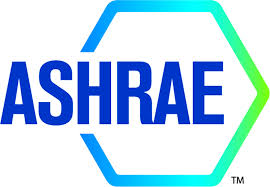 In his recent address on climate change at Georgetown University, President Obama announced a new series of federal requirements for energy efficiency. Among them are rules published by the Department of Energy (DOE) requiring new federal buildings to meet or exceed more ambitious energy standards. On July 9 in the Federal Register, the DOE updated the baseline federal commercial standard from ASHRAE Standard 90.1-2007 to 90.1-2010. Designs of federally built multi-family high rises and commercial buildings will need to comply with the new standards, effective for construction projects beginning in July 2014.
In his recent address on climate change at Georgetown University, President Obama announced a new series of federal requirements for energy efficiency. Among them are rules published by the Department of Energy (DOE) requiring new federal buildings to meet or exceed more ambitious energy standards. On July 9 in the Federal Register, the DOE updated the baseline federal commercial standard from ASHRAE Standard 90.1-2007 to 90.1-2010. Designs of federally built multi-family high rises and commercial buildings will need to comply with the new standards, effective for construction projects beginning in July 2014.
The ASHRAE 90.1 standard was developed through an American National Standards Institute (ANSI) consensus process and has provided minimum energy efficiency requirements for buildings (except low-rise residential buildings) since 2001. Rapid technology advances and fluctuating energy costs have led the American Society of Heating, Refrigerating and Air-Conditioning Engineers (ASHRAE), which develops indoor air quality, HVAC and other standards, to continually update ASHRAE 90.1. Many changes were made in the 2010 edition, covering building envelope, HVAC, lighting and other issues. According to the Department of Energy’s Building Energy Codes Program, the most significant changes in the new standard are:
- Expanded scope to cover receptacles and process loads.
- Increased stringency in building envelope (opaque elements and fenestration) requirements, and added continuous air barrier and albedo roof requirements.
- Lowered interior power lighting densities, additional occupant sensing controls and mandatory day lighting requirements, and a new five-zone exterior lighting power density table.
- Higher equipment efficiencies, more requirements for energy recovery, economizers, and more energy-conserving controls.
- Clarification in and expansion of modeling requirements.
The cost effectiveness of compliance plays a role in the updated standard as well. New federal buildings must be designed to exceed the minimum ASHRAE 90.1-2010 standards by 30% if determined to be cost effective within the lifecycle of the structure.
The DOE decided to switch from the 2007 to the 2010 versions of ASHRAE 90.1 after calculating that the newer standard would save 18.2% more energy, an estimated energy cost savings of $1.74 billion over 30 years. Over that same period, carbon dioxide emissions would be reduced by almost 90 million metric tons. The requirement for 30% improved performance for some buildings would further decrease costs and energy use. By 2043, says the DOE, the updated rule could cut carbon emissions from federal buildings by roughly 199 million metric tons—as much as generated from burning 462,790,698 barrels of oil.
What does it mean for Lessors?
DOE’s more rigorous standards are consistent with a broader movement towards sustainability in federal real estate. Clearly, facilities, which comprise a large portion of federal energy consumption, will be targeted to satisfy Obama’s Georgetown University pledge that “Your federal government will consume 20 percent of its electricity from renewable sources within the next seven years.”
The change in ASHRAE standards is silent on whether it affects the leased inventory and related GSA policy directives suggest that only federally owned buildings must comply–for now. Yet, it is our experience that the federal inventory is merely a test bed for the broader inventory and that tougher energy efficiency standards will eventually find their way into leases.
Lessors should be minding this trend because the issue of sustainability–at its core–has bipartisan support. Republicans approach the issue more from the “energy independence” angle and Democrats approach it more from the “energy efficiency” angle but the goals in either instance are often similar. For example, it was George W. Bush who signed the Energy Independence and Security Act (EISA), which established the “Zero-Net-Energy Commercial Buildings Initiative” for the purpose of ensuring the future federal buildings would be constructed and operated “in a manner that will result in no net emissions of greenhouse gases”. It was also EISA that established the Energy Star requirement that is now part of GSA’s boilerplate lease.
Under the Obama Administration the move towards improved sustainable design has continued and accelerated. $4.5 billion GSA’s Stimulus funds were invested in projects to improve energy efficiency in federal buildings, many of which we have written about on this blog. In October 2009, President Obama issued Executive Order 13514, to ensure that EISA’s net-zero-energy building requirements will be met, along with other energy, water and waste reduction targets. Agencies’ progress towards these goals are tracked and published in annual scorecards. In short, there is a lot of momentum on sustainability issues and we don’t see that shifting any time soon, regardless of who resides in The White House or bangs the gavel in Congress.
Lessors should expect that the federal government will demand improved efficiency from its leased inventory to match its owned inventory requirements and that additional, intensifying mandates will emerge, especially as the 2030 milestone approaches. Property owners should begin now to take a hard look at their buildings to anticipate what can be done to keep pace with these ever more aggressive sustainability goals.
